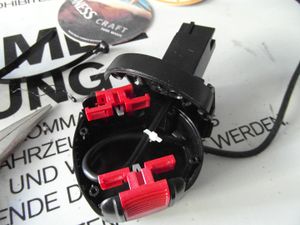Project:Semi-Cordless Drill
| ProjectInfoBox Semi-Cordless Drill | |
|---|---|

| |
| Status: | working, but not perfect |
| Release Date: | Sep 2017 |
| Initiator: | Lukas |
| Materials Used: | old battery pack, power supply, zip ties |
| Tools Used: | cordless drill, soldering iron |
| Approx. Cost: | about 30 € |
One of my cordless drill NiCd battery packs couldn't hold a charge for more than five minutes anymore so it had to go. But I kept the platic case and the push connectors and wired them to a power supply! The drill (Bosch PSR 960, but the concept can easily be transferred to any model) can still be used with a good battery pack as before, but you can easily switch from cordless to corded mode depending on your needs (or if you're just to impatient to wait for that charger to finally get its job done).
An upgrade to Li-ion cells[1] was also an option but would have required new charging electronics and probably some skills I didn't have.
The first working version is usable, but you have to accellerate with a bit of caution or it stalls. Perhaps a capacitor can mitigate this effect, and I might also add some fancy LEDs when I open it up again...
Measuring Consumption
At first I tried to find information about the intended battery properties from the label and then Patrick also helped me meter the motor's power consumption by hooking the drill up to a adjustable power supply.
- initial calculations: label said "9.6 V, 1.25 Ah, 4/5 Cs NiCd"
- "Cs" might refer to discharge capacity, would be **5 to 6.25 A** (1.25 times 4 to 5)
- NiCd cells can deliver up to 1.5 V when fully charged, so instead of 9.6 V the motor can actually handle **12 V** (8 cells) and probably even more
- with the lab power supply, we arrived at an estimate of **2.5 A** without resistance and **5 A** on torque setting 3 out of 5
After these math exercises, I purchased a 12 V, 6.7 A power supply from Reichelt.
Removing the Battery
Only the battery pack's plastic casing and the connector plate was needed for this project, the old NiCd cells needed to go. For this model, the case was held together by four screws. One of them was hidden under a plastic plug which was carefully drilled out with a twist drill bit so I could tamper with the internals.
Once open, the case revealed 8 cells wired in series as we knew from measuring.
<More details to follow>